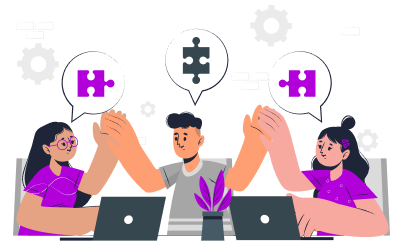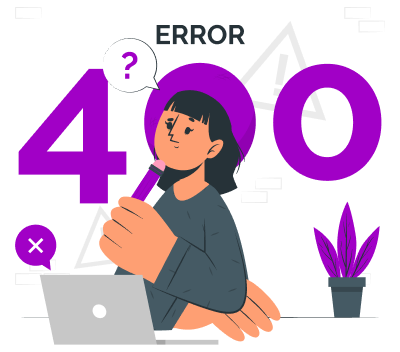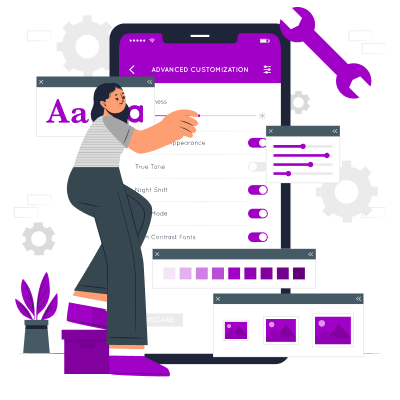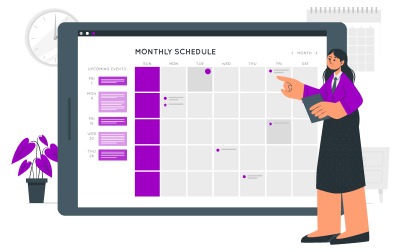
Recruitment Software in India has experienced a significant surge in popularity, owing to various factors driving the country’s competitive job market.
As the economy grows and businesses expand, the demand for talented professionals has skyrocketed. This has led to a growing need for efficient and streamlined recruitment processes, prompting organizations to turn to technology for assistance.
This blog presents you with a curated list of 8 unpopular yet exceptional Recruitment Software in India.
While many may be familiar with the mainstream platforms dominating the market, we believe it’s crucial to shed light on these top-notch alternatives that offer unique features and functionalities.
Whether you’re a recruiter, HR professional, or a business owner looking for the perfect hiring solution, our comprehensive Applicant Tracking Systems will help you discover the untapped potential of these lesser-known recruitment software options.
So, without further ado – let’s dive in and start with the basics first.
What is Recruitment Software?
Recruitment software is a specialized tool designed to streamline and automate various aspects of the recruiting process.
In layman’s terms, such tools help organizations efficiently manage job postings, track candidate applications, screen resumes, schedule interviews, and collaborate with hiring teams.
In addition to this, online recruitment systems even centralize candidate data, facilitate communication, improve candidate sourcing, and optimize Employee Performance Evaluation. This, in turn, helps companies and recruiters to enhance overall efficiency, reduce manual efforts, and ensure more organized and effective recruitment.
What is the Importance of Recruitment Software?
Recruitment software plays a crucial role in modern hiring processes due to several reasons:
1. Efficiency:

Recruitment software automates various manual tasks involved in hiring, such as Free Job Posting, sorting through resumes, scheduling interviews, and managing candidate communication. By streamlining these processes, recruiters can focus their time and effort on more strategic aspects of recruitment, leading to increased productivity and faster time-to-hire.
2. Improved Candidate Experience:

Recruitment software provides a user-friendly interface for candidates to apply for jobs, upload their resumes, and track the progress of their applications. It enables automated email notifications, status updates, and personalized communication, ensuring that candidates feel engaged and informed throughout the hiring process. This improves the overall candidate experience and helps create a positive employer brand.
3. Enhanced Collaboration:

Recruitment software offers a centralized platform where hiring teams can collaborate effectively. It allows team members to access candidate information, review resumes, provide feedback, and communicate seamlessly. By facilitating collaboration, recruiters can make better-informed decisions, minimize communication gaps, and expedite the hiring process.
4. Effective Candidate Sourcing:

Recruitment software provides tools and features to optimize candidate sourcing. It enables job postings on multiple job boards, career websites, and social media platforms, expanding the reach and visibility of job openings. Additionally, many recruitment software solutions use AI-powered algorithms to analyze resumes and match candidates with job requirements, making the Candidate Recruitment and Selection Process more efficient and accurate.
Also Read – Find The Perfect Fit With The Benefits of Candidate Sourcing Tools
5. Data-Driven Decision Making:

Recruitment software collects and analyzes data throughout the hiring process. It generates Reports and Analytics on key recruitment metrics like time-to-fill, source of hire, and candidate quality. These insights help recruiters identify bottlenecks, measure the effectiveness of recruitment strategies, and make data-driven decisions to improve their hiring outcomes.
6. Compliance & Security:

Recruitment software helps organizations ensure GDPR Compliance with data protection regulations, such as the General Data Protection Regulation (GDPR) or the California Consumer Privacy Act (CCPA). It offers secure data storage, access controls, and privacy features to safeguard candidate information, reducing the risk of data breaches and maintaining the trust of candidates.
What is the Difference Between an Applicant Tracking System & Recruitment Software?
The terms Applicant Tracking System (ATS) and Recruitment Software are often used interchangeably, but there is a subtle difference between the two:
Applicant Tracking software is a specific type of recruitment software that focuses primarily on managing and tracking candidate applications throughout the hiring process. It includes features such as Resume Sorting Software, application screening, interview scheduling, and candidate communication.
An applicant tracking system is designed to streamline the administrative tasks associated with recruitment, from initial application submission to final hiring decisions.
On the other hand, recruitment software is a broader term that encompasses a range of tools and technologies used in the recruitment process.
While an applicant tracking system is a core component of recruitment software, the latter typically includes additional functionalities beyond application tracking.
Recruitment software may incorporate features like candidate sourcing, job posting, talent management, analytics, reporting, and collaboration tools to support various stages of the recruitment life cycle.
In essence, an applicant tracking system is a specific module or component within the broader umbrella of recruitment software, dedicated to managing and tracking candidate applications.
Recruitment software, on the other hand, refers to a more comprehensive suite of tools that cover a wider array of recruitment-related functions.
Also Read – From CVs to Hires: How Applicant Tracking Systems Simplify Hiring?
What Hiring Process Looks Like Without Recruitment Software?
Recruitment plays a vital role in shaping the success of an organization, and without the support of automated recruitment software, several challenges can arise. In this section of the blog, we will explore three significant problems that arise in recruitment without automation: inefficient screening, lack of data-driven insights, and limited scalability.
1. Endless Paperwork:

One of the major drawbacks of manual recruitment processes is the burden of endless paperwork. Without automated software, recruiters often find themselves drowning in piles of resumes, applications, and other related documents.
Managing and organizing physical or digital paperwork can be time-consuming, leading to inefficiencies and a higher risk of errors.
Recruiters must manually review each document, extract relevant information, and store it appropriately. This process not only consumes valuable time but also leaves room for human error. Misplacing or misfiling important documents can lead to confusion, delays, and even loss of potential candidates. Additionally, searching through stacks of paperwork to retrieve specific information can be an arduous and tedious task, hindering the overall efficiency of the recruitment process.
2. Lack of Communication with Candidates:

Effective Communication is vital throughout the recruitment process, and without automated software, it becomes challenging to maintain clear and prompt communication with candidates. Traditional communication methods, such as phone calls or email, can lead to delays, miscommunication, and even missed opportunities.
Recruiters may struggle to respond to candidate inquiries and provide timely updates due to the volume of applicants and the manual processes involved. This lack of prompt communication can leave candidates feeling frustrated, uninformed, and disengaged from the recruitment process.
Moreover, without automated tools to streamline communication, it becomes difficult to maintain consistency and ensure all candidates receive the same level of information and attention.
Candidates also expect transparency and clarity in the recruitment process. Without automated software, it can be challenging to provide clear instructions regarding the next steps, interview schedules, or feedback on their application status.
This lack of communication can negatively impact the candidate’s experience and harm the organization’s reputation as an employer.
3. Time-consuming:

Manual recruitment processes can be incredibly time-consuming for recruiters. Without automation, tasks such as reviewing resumes, scheduling interviews, and coordinating communication with candidates must be handled manually. This can be a tedious and repetitive process, taking up a significant amount of time that could be better spent on strategic activities.
For instance, reviewing a large volume of resumes and applications manually can be extremely time-consuming.
Recruiters have to carefully analyze each document, extract relevant information, and compare candidates’ qualifications against the job requirements. Additionally, without automated tools to streamline the screening process, recruiters may spend excessive time on repetitive tasks, resulting in slower overall recruitment timelines.
Furthermore, manually coordinating interview schedules with multiple candidates and stakeholders can become a logistical challenge. The back-and-forth communication required to find suitable time slots for everyone involved can lead to delays and inefficiencies. Overall, the absence of automated software prolongs the recruitment process and hampers productivity.
4. Human Error:

Another significant problem in recruitment without automated software is the increased risk of human error. Relying solely on manual processes and human judgment can introduce inaccuracies and inconsistencies in the recruitment process.
Human errors can occur at various stages, such as misreading resumes or application details, recording incorrect information, or making mistakes during data entry. These errors can lead to poor hiring decisions, overlooking qualified candidates, or misrepresenting candidate information.
Moreover, manual recruitment processes are susceptible to biases. Recruiters may inadvertently introduce bias based on factors like gender, ethnicity, or educational background, affecting the fairness and diversity of the hiring process.
Without automated tools that help mitigate bias and standardize evaluation criteria, organizations may unintentionally overlook talented candidates or make biased decisions.
5. Inefficient Screening:

Manual screening of resumes and applications can be a daunting and time-consuming task for recruiters. Without automated recruitment software, the process of reviewing numerous resumes becomes inefficient and prone to inconsistencies.
Recruiters must manually analyze each resume, searching for relevant qualifications, skills, and experience. This subjective process can result in oversights, as recruiters may miss important details or fail to identify suitable candidates.
Inefficient screening can lead to a higher chance of overlooking qualified individuals or inadvertently prioritizing less qualified candidates.
Also Read – How To Tackle Recruitment Obstacles? – A Guide To Applicant Tracking Systems
6. Lack of Data-driven Insights:

Without automated recruitment software, organizations miss out on valuable data-driven insights. Data collected during the recruitment process can provide critical information for optimizing hiring strategies, identifying trends, and improving overall recruitment outcomes.
Automated recruitment software allows for the collection and analysis of data related to various recruitment metrics. These metrics can include application conversion rates, sourcing channels, interview performance, and time-to-hire. Such insights help organizations make data-driven decisions, optimize their recruitment processes, and enhance their understanding of the effectiveness of different recruitment strategies.
7. Limited Scalability:

Manual recruitment processes face challenges when it comes to scaling up to meet the demands of a growing organization. As the number of job applicants increases, managing the recruitment process becomes increasingly complex and time-consuming without automation.
Handling a large volume of applications manually can overwhelm recruiters, leading to delays, errors, and a decreased ability to provide a consistent and positive candidate experience.
Without automated recruitment software, scaling the recruitment process becomes a daunting task, hindering the organization’s ability to efficiently handle a high volume of candidates and maintain a standardized selection process.
Searching for the Best Recruitment Software in India? Look no further!
Get your hands on Super Recruit, an exceptional recruitment software in India, specially designed to take the hiring burden off hiring managers’ shoulders. With Super Recruit, hiring becomes easier, faster, and smarter.
Don’t believe us? Don’t worry- Get a 30 Days Free Trial and decide later!
9 Ways Recruitment Software Helps Hiring Managers
Now that you know the challenges HR managers and recruiters face while recruiting manually, let’s see how recruitment software solves those issues in no time:
1. Efficient Candidate Sourcing:

Recruiting software offers a wide array of sourcing channels that the hiring team can leverage to attract top talent.
From popular job boards to social media platforms and career websites, these software solutions provide access to diverse candidate pools.
HRs and recruiters can target specific demographics, industries, or skill sets to find the most suitable candidates for their open positions. This expansive reach increases the chances of finding qualified candidates quickly and efficiently.
2. Automated Resume Screening:

Recruitment software incorporates artificial intelligence (AI) algorithms that automate the Resume Screening Process. By defining specific criteria, hiring managers can customize the screening process to filter out unqualified applicants automatically.
The software scans the resume for keywords, experience, education, and other relevant qualifications. It presents HRs and recruiters with a shortlist of the most promising candidates, saving them valuable time and effort in manually reviewing large volumes of resumes.
3. Enhanced Collaboration:

Recruiting software facilitates seamless collaboration among HRs and other stakeholders involved in the hiring process. It provides a centralized platform for communication, feedback sharing, and candidate evaluation.
HRs can easily communicate with team members, interviewers, and even external recruiters, streamlining the decision-making process. This collaborative environment ensures that everyone is on the same page, resulting in faster and more effective hiring decisions.
4. Streamlined Interview Scheduling:

Recruiting software simplifies the interview scheduling process for hiring managers. It eliminates the need for back-and-forth emails or phone calls by offering automated interview scheduling tools. Hiring managers can share their availability, and candidates can select their preferred interview slots from an online calendar.
The software automatically manages time zones and sends out interview invitations and reminders. This Streamline Interview Scheduling process reduces the chances of scheduling conflicts and ensures a smooth and efficient interview process.
5. Candidate Relationship Management:

Top-notch online recruiting software in India allows hiring managers to effectively manage and nurture relationships with candidates. It provides a centralized database where hiring managers can track candidate interactions, store interview notes and feedback, and maintain a talent pool for future opportunities.
This candidate relationship management feature enables HRs to build strong relationships with potential candidates and stay connected even after the hiring process concludes. By fostering relationships and maintaining contact, recruiters can tap into a network of qualified candidates for future roles.
6. Data-Driven Decision Making:

Recruitment software provides valuable data and analytics on various recruitment metrics. Hiring managers can analyze metrics such as application rates, source effectiveness, time-to-hire, and cost-per-hire.
These insights help HRs make informed decisions and optimize their recruitment strategies. For example, they can identify the most successful sourcing channels, evaluate the efficiency of their screening criteria, and identify bottlenecks in the hiring operations.
Data-Driven Decision Making enables HRs to continuously improve their recruitment practices and achieve better results.
7. Improved Candidate Experience:

Recruitment software focuses on enhancing the candidate experience throughout recruitment. Automated communication features keep candidates engaged and informed at every stage, reducing the chances of candidates dropping out due to a lack of communication.
Personalized updates, such as Trigger Email or notifications, provide candidates with real-time information about their application status, interview schedules, and next steps.
Self-service portals allow candidates to access relevant documents, complete required forms, and track their progress. These features create a positive and professional impression of the organization, leading to a better candidate experience.
8. Reduced Bias in Hiring:

If you invest in one of the Best Recruitment Software in India, it will help you mitigate unconscious bias. It enables hiring managers to standardize evaluation criteria and eliminate bias by focusing solely on candidates’ qualifications, skills, and experience.
Blind screening features hide personal information such as names, gender, or ethnicity during the initial screening phase, ensuring that candidates are evaluated solely on their merits. By reducing bias, recruitment software promotes diversity and inclusivity, allowing hiring managers to make fair and objective hiring decisions.
9. Seamless Onboarding:

Many recruitment software platforms offer integrated onboarding features that simplify the transition of new hires from candidate to employee.
HRs can initiate the onboarding process directly from the software, eliminating the need for manual paperwork and redundant data entry. They can track the progress of onboarding activities, monitor the completion of required forms, and assign tasks to relevant stakeholders.
This seamless onboarding experience ensures a smooth integration of new hires into the organization, setting the foundation for a successful employee journey.
Also Read – Best Employee Assessment Tools that will assist you in Hiring Best Candidates
Debunking 6 Myths About Recruitment Software
Recruitment software has revolutionized the entire recruitment, providing numerous benefits and streamlining operations. However, there are some common myths and misconceptions surrounding recruitment software that may prevent organizations from fully embracing its potential. In this section, we will debunk six of these myths and shed light on the truth about recruitment software:
Myth 1: Recruitment software is only suitable for large organizations.
Truth: Recruitment software is beneficial for organizations of all sizes. While larger organizations with high hiring volumes can benefit from the scalability and automation features, smaller organizations can also leverage recruitment software to streamline their hiring process, save time, and make more informed decisions. There are various software options available, including ones tailored to the needs and budgets of smaller businesses.
Myth 2: Recruitment software eliminates the need for human involvement in the recruiting process.
Truth: Recruitment software is designed to augment and enhance human involvement, not replace it. While automation features can handle repetitive tasks like resume screening and interview scheduling, human judgment and decision-making remain crucial. HRs still play a vital role in evaluating candidates, conducting interviews, and making final hiring decisions. Recruitment software acts as a tool to support and optimize recruitment, empowering companies to make more efficient and informed choices.
Myth 3: Recruitment software is too expensive and not cost-effective.
Truth: While there may be upfront costs associated with implementing recruiting software in India, it is important to consider the long-term benefits and return on investment (ROI). Recruiting software helps streamline recruitment, reduce time-to-fill positions, and improve the quality of hires. These advantages can lead to significant cost savings in the long run, such as decreased recruitment advertising costs, reduced turnover, and improved overall productivity. Organizations should consider the overall value and impact on efficiency when assessing the cost-effectiveness of recruiting software.
Myth 4: Recruitment software is complicated and requires extensive training.
Truth: Recruiting software is designed to be user-friendly and intuitive. Most modern software solutions offer user-friendly interfaces and provide comprehensive training and support materials to help users get started. Additionally, many recruiting software in India providers offer customer support and assistance to address any questions or challenges that may arise. With a little training and familiarization, HRs can quickly adapt to using recruiting software in India and take full advantage of its features.
Myth 5: Recruitment software leads to biased hiring decisions.
Truth: Recruiting software, when properly implemented and utilized, can actually help reduce bias while recruiting. By standardizing evaluation criteria, automating resume screening, and utilizing blind screening features, recruiting software helps mitigate unconscious bias based on factors like gender, ethnicity, or educational background. These features ensure that candidates are evaluated solely on their qualifications and skills, promoting a fair and inclusive recruitment.
Myth 6: Recruitment software is a one-size-fits-all solution.
Truth: Recruiting software comes in various types and configurations, allowing organizations to choose the one that best fits their specific needs. Different software solutions offer a range of features and functionalities tailored to different industries, company sizes, and hiring objectives. It is essential for organizations to assess their unique requirements and select a recruitment software solution that aligns with their goals, workflows, and budget.
Also Read – Build 5X Productive Team With Recruitment Agency Software
9 Must-Have Features in Recruitment Software that Simplify Recruitment Process
Here are some must-have features in recruitment software that can significantly simplify your recruitment:
1. Applicant Tracking Software (ATS):
Applicant tracking software is a fundamental feature of recruiting software. It allows HRs to effectively manage and track candidates throughout the entire recruitment. Applicant tracking software features include Resume Parsing, automated application screening, candidate database management, and customizable workflows. With applicant tracking software, HRs can easily organize and search candidate information, track their progress, and ensure a smooth flow from application to onboarding.
2. Job Posting and Distribution:
Recruiting software should provide seamless job posting and distribution capabilities for several job openings. This feature enables HRs to create and publish job postings to multiple job boards, social media platforms, and career websites with just a few clicks. The software should also offer integration with popular job boards and aggregators, simplifying the process of reaching a wider pool of candidates.
3. Candidate Sourcing & Pool Management:
Effective candidate sourcing is critical to finding top talent. Recruiting software should offer features that enable hiring managers to proactively source candidates, such as resume databases, talent communities, and AI-powered candidate matching. The software should also provide tools for building and managing a talent pool, allowing hiring managers to store and organize potential candidates for future opportunities.
4. Resume Screening & Automated Shortlisting:
Automated resume screening features use AI algorithms to analyze and evaluate resumes based on predefined criteria. This saves time and effort for HRs by automatically filtering out unqualified candidates and creating a shortlist of the most promising ones. The software should allow for customization of screening criteria to match specific job requirements.
5. Interview Scheduling & Collaboration:
Recruitment Management Software should offer tools for seamless Interview Scheduling and collaboration. This feature allows recruiters to coordinate interview dates, times, and locations with candidates and interviewers. It should also provide automated reminders and notifications to ensure a smooth and efficient interview process. Additionally, collaboration features such as feedback sharing, interviewer scorecards, and centralized communication facilitate effective collaboration among hiring team members.
6. Referral List:
One of the must-have features in recruitment management software that significantly simplifies the recruitment process is a referral list. Referrals have long been recognized as a valuable source for finding top talent, and a referral list feature enhances and optimizes the referral process. Recruiting software solutions with a referral list feature allow employees to submit referrals directly through the system. They can input the candidate’s information, attach resumes or relevant documents, and provide additional details about the referral. This eliminates the need for manual submission methods like email or paper forms, making it easier and more convenient for employees to refer potential candidates.
7. Reporting & Analytics:
Recruiting software should offer Advanced Reporting and Analytics for Recruiters. It should provide recruitment data, insights and metrics on key recruitment performance indicators such as time-to-fill, source effectiveness, applicant conversion rates, and diversity metrics. These analytics help companies make data-driven decisions, identify bottlenecks in hiring tasks, and continuously improve recruitment strategies.
8. Interview Calendar View:
An Interview Calendar View is an essential feature in recruiting software that simplifies the recruitment process by facilitating efficient scheduling and coordination of interviews and other recruitment-related events. The calendar tool sends automated reminders and notifications to all participants involved in the recruiting process. HRs, interviewers, and candidates receive timely notifications about upcoming interviews.
9. Integration & Customization:
Recruiting software should offer integration capabilities with other HR systems and tools, such as HRIS software (Human Resource Information System), payroll, or background check providers. This enables seamless data exchange and streamlines the overall HR workflow. Additionally, the software should be customizable to fit the specific needs and branding of the organization, allowing for tailored workflows, branding elements, and user permissions.
Also Read – Internship Completion Letter: Meaning, Purpose, Template, and More
8 Unpopular But Top-Notch Recruitment Software in India
Now let’s dig deeper and explore 8 top-notch recruitment software in India that will simplify hiring operations and reap desired results with a bare minimum of human involvement:
1. Super Recruit

Super Recruit is a highly effective recruitment software in India offered by Superworks. This software stands out from the crowd – all thanks to its unique features as well as capabilities. Here’s a detailed explanation of Super Recruit and what makes it a top-notch recruiting software:
-
Advanced Candidate Sourcing:
Super Recruit provides powerful candidate sourcing capabilities, allowing recruiters to find the right candidates quickly and efficiently. It offers various sourcing channels, including job boards, social media platforms, and resume databases, enabling recruiters to access a vast talent pool.
Super Recruit simplifies the interview management process with features like automated interview scheduling, interview feedback collection, and video interviewing capabilities. Recruiters can easily coordinate with candidates and hiring teams, improving communication and reducing scheduling conflicts.
Super Recruit features a user-friendly interface that is easy to navigate, making it accessible to both experienced recruiters and those new to recruiting software. The intuitive design enhances productivity and minimizes the learning curve for users.
Super Recruit prides itself on providing excellent customer support to its users. They offer timely assistance, training resources, and troubleshooting guidance to ensure a smooth experience for recruiters.
Super Recruit provides in-depth analytics and reporting features, offering valuable insights into the recruitment process. Recruiters can access metrics such as time-to-fill, source effectiveness, and candidate conversion rates. These analytics enable data-driven decision-making and help optimize the recruitment process.
2. Talent Pool

Talentpool is an innovative cloud-based recruiting software aiming to establish. With a comprehensive range of features, including job requisition management, resume sourcing, candidate tracking, interview scheduling, and more, Talentpool caters to the diverse needs of its customers.
One of the key advantages of Talentpool is its ability to accommodate various job requisition approval workflows, supporting the different standard requisition types prevalent within organizations.
Additionally, Talentpool provides a seamless experience for receiving applications through multiple channels such as job boards, walk-ins, internal job postings, and marketing campaigns, ensuring a wide pool of potential candidates.
Efficiently managing candidate data is a crucial aspect of Talentpool’s functionality. It allows individual as well as bulk importing of job resumes from various job boards into its digital database.
3. Oorwin

Oorwin offers a cutting-edge recruitment solution powered by AI, seamlessly integrating resourcing, hiring, and onboarding of new candidates with integrated talent management. By leveraging the power of artificial intelligence, Oorwin enhances both internal and external productivity, greatly improving the efficiency of the recruitment process. This results in a significant reduction in the time it takes to hire new candidates.
With Oorwin’s screening pipeline integrated into their recruiting software, recruiters gain valuable insights into candidates’ rankings. This enables them to prioritize and contact the fittest candidates first, based on their skills and roles.
Oorwin empowers customers to implement various recruitment models, allowing for personalized and tailored recruitment. Customers can define different types of hiring, assign access roles to each step, and incorporate customized hiring stages, ensuring a seamless and adaptable experience.
4. TalentRecruit

TalentRecruit stands out as a highly comprehensive recruiting software, leveraging AI technology to streamline the onboarding process.
This state-of-the-art applicant tracking software incorporates advanced machine learning capabilities that intelligently rank and auto-suggest ideal matches. It assists organizations in efficiently tracking, evaluating, engaging, and ultimately onboarding the most qualified candidates.
With TalentRecruit, organizations gain access to an end-to-end, enterprise-ready hiring platform, empowering them to build exceptional teams and drive success in their recruitment endeavors.
5. Recooty

Recooty offers a comprehensive solution that encompasses every stage of the recruitment life cycle, spanning from job posting to hiring and onboarding. HR leaders rely on this software to streamline talent acquisition and automate various tasks, simplifying their workflow.
The applicant-tracking feature is a standout component of Recooty, enabling HR teams to efficiently review and shortlist potential candidates. All of this is conveniently accessible through a centralized cloud-based dashboard. Additionally, the applicant tracking system automates the process of scheduling interviews with candidates, optimizing time management for recruiters.
When it comes to data privacy and protection, Recooty adheres to industry standards, ensuring the confidentiality and security of recruitment-related information.
6. TalentOrb

TalentOrb stands out as a top-tier next-generation recruitment management system fueled by cutting-edge technology. It offers an exceptional resourcing experience and a comprehensive platform that effectively manages the entire requisition life cycle, from hiring to onboarding.
7. Resumefox

Resumefox is a dependable and user-friendly cloud-based recruitment management software that streamlines and automates numerous manual tasks for your recruitment department.
With its modular design, Resumefox offers a range of exceptional features to enhance your hiring processes. These include Document Management, Expense Management, Online Tests & Psychometric Tests, Performance Management, Recruitment Management, Time & Attendance Management, Applicant tracking, Applications Management, and more.
By utilizing Resumefox, you can efficiently manage all aspects of recruitment while minimizing manual effort and improving productivity.
8. SpringRecruit

SpringRecruit is a highly beneficial and enduring recruitment software in India that has supported over 100 teams in streamlining their recruitment processes. It offers a visually captivating dashboard, allowing users to easily track their candidates through a funnel view.
With customizable recruitment stages, ACL (Access Control List), and an array of additional features, SpringRecruit provides a comprehensive and user-friendly experience.
This software excels in various areas, including recruitment management, applicant tracking, recruiting management, resume database, resume search, social media integration, talent acquisition, candidate management, and more. With SpringRecruit, teams can efficiently manage their recruitment workflow and leverage advanced functionalities to enhance their hiring endeavors.
Bottom Line
In conclusion, while the aforementioned best recruiting software options may not be widely recognized, they offer exceptional features and functionality that can revolutionize the recruitment industry in India.
From streamlined Applicant Tracking Systems to AI-powered candidate assessment tools, this top-notch recruitment software in India provides innovative solutions to recruitment challenges. Embracing this underrated software can give Indian businesses a competitive edge in talent acquisition and ultimately lead to better hiring outcomes.
So, what are you waiting for? Start with exploring Super Recruit. Contact us now.










































 Contact Sales
Contact Sales 


































